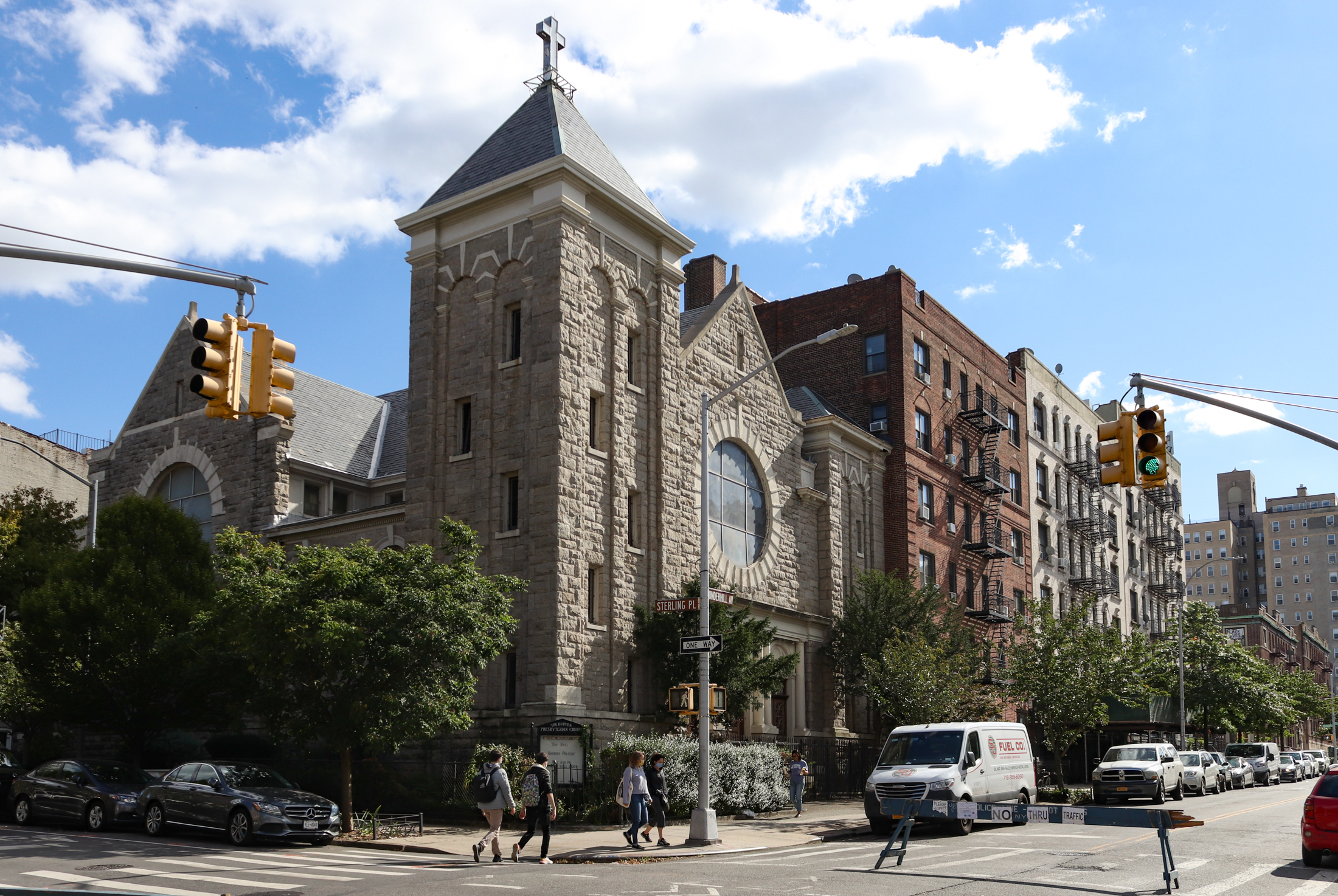LPC: Prospect Heights 'At the Top of the List'
More than 50 people showed up on Wednesday night to learn more about the effort to landmark Prospect Heights. Wedged in between the historic districts of Park Slope, Fort Greene, Clinton Hill and Crown Heights (see map—click to enlarge), Prospect Heights remains particularly vulnerable to losing its considerable collection of historic structures. One reason is…

More than 50 people showed up on Wednesday night to learn more about the effort to landmark Prospect Heights. Wedged in between the historic districts of Park Slope, Fort Greene, Clinton Hill and Crown Heights (see map—click to enlarge), Prospect Heights remains particularly vulnerable to losing its considerable collection of historic structures. One reason is the neighborhood’s relative lack of density: it’s very underbuilt compared to what the zoning laws currently allow. In the past couple of year’s, we’ve chronicled a couple of the buildings that have already paid the ultimate price, 528 Bergen Street (before and after) and 330 Park Place. At Wednesday’s meeting, reps from Prospect Heights Neighborhood Development Council, the Municipal Art Society and the Historic Districts Council spoke, respectively, to both the threat from development, the quality of the architectural stock and landmarking’s positive impact on property values. Then Mary Beth Betts, director of research for the New York City Landmarks Preservation Commission (LPC), delivered the money shot: “[Prospect Heights] is at the top of the list of [potential historic] districts that we’re looking at.” Given the number of areas clamoring for face time with the LPC, that must have come as welcome news for the pro-preservation crowd. Next step: Getting Bob Tierney out for a walking tour. Meanwhile, Community Board 8 has commissioned a study to help it evaluate whether a rezoning (read: downzoning) may be in order. More on that later.
Promising Prospects for Prospect Heights Historic Designation [AY Report]
Growing Momentum for P’spect Heights Landmarking [Brownstoner]









Keep up the work on saving historic homes in the area. We support historic districts. find us at http://www.historicnearwestside.com Thank you for your time.
Does anyone know what is happening at 500 Sterling? The foundation has been in place for a year or so, but it seems to have been abandoned. PLEASE lemmeknow as I live on the block!
12:54, i have no idea — i was just explaining my (potentially mistaken) prior impression about building upwards. what you and 12:00 describe sounds more sensible and i assume (hope) more reflective of the actual rules.
wait, z, so upwards builds, even if it’s a period-appropriate design, would need to be invisible from the street? what if, say, we’re talking about a brownstone on a block with taller brownstones? could you then build upward with no legal snags?
12:00, good to know — i had understood that lpc required upward builds to be invisible from the street (and therefore much smaller than otherwise possible). not that i’m planning to build up any time soon! i am familiar with the st. marks property you mentioned and have heard similar grumblings about it.
Dear Z, HD would not prevent you from expanding your home based on unused FAR. What it would do is require you to submit your plans to the LPC for approval. Their concerns are largely aesthetic and contextual. For example, if you were planning a vertical extension, they may require you to create a period-appropriate mansard roof — instead of just plonking a concrete stucco bunker atop your brownstone, as someone did recently at 162 St Marks Ave nr Carlton. All the neighbors were horrified. Especially those living right next door because the construction was so 2nd rate and poorly managed that both adjacent properties were damaged in the process. It’s a real blot on the block.
Btw, there is lots of good information about the implcations of designation on the LPC’s site. Also a good FAQ on PHNDC.org.
Historic designation should also protect the neighborhood from the use of eminent domain. For while it’s not a silver bullet, HD makes it tougher for eminent domain to be justified because a) it makes the blight argument (which was invoked in the case of Atlantic Yards) look ridiculous, b) it explicitly aims to prevent demolition by neglect, c) it creates an added layer of bureaucratic oversight, and d) — for all the reasons above — it discourages developers from even starting what is likely to be a protracted and unsuccessful effort.
as a prospect heights homeowner, i have mixed feelings about this. on the one hand, i agree that landmarking would help preserve the architectural character of the neighborhood. on the other hand, our house is small and we have lots of extra FAR, and i don’t like the idea of losing our rights to build upwards (or having a much more limited ability to do so). on balance, i think it’s a good step, but not without costs to some local homeowners.
Prospect Hts has block upon block of excellent row housing, on beautiful tree shaded blocks. That needs protecting, and these houses are just as beautiful and worthy as those across Flatbush in Park Slope.
Landmarking does not mean that empty lots can’t be built on, or buildings rehabbed. It means that new construction has to be in context to the buildings around it. Maybe that will finally force developers to actually hire architects with a bit of vision and imagination, instead of most of what we have being built now. I don’t think most people expect neighborhoods to be frozen in time, but need protection from hacks who will throw any cheap POS on a lot with no consideration of anything but money.
Landmarking is not perfect, or the solution to everything, but it is the best tool we have now to protect the beauty of our neighborhoods.